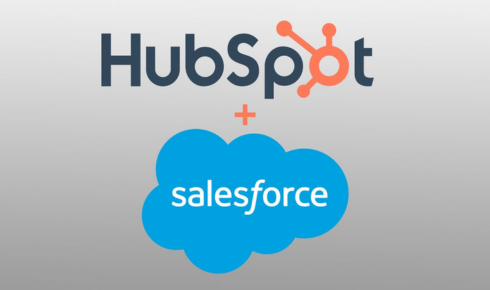Introduction
Running a business in Australia is no easy feat, especially with the constant juggling between marketing, sales, and customer service teams. You know the drill—managing customer data, keeping track of leads, and maintaining meaningful communication can sometimes feel like trying to wrangle a kangaroo: chaotic and unpredictable. But what if there was a way to streamline all this, like giving your business a set of tools that work together in perfect harmony?
Enter the world of HubSpot and Salesforce integration—a powerful combo that promises to transform your customer relationship management (CRM) game. Imagine having your marketing automation, sales processes, and customer support all synced, working together to provide a seamless, efficient, and personalised customer experience. Sounds like a dream? It doesn’t have to be.
In this post, we’ll walk you through how integrating HubSpot with Salesforce can make your business run smoother than a perfectly executed Aussie barbecue—improving communication, boosting productivity, and ultimately, driving business growth.
1. What is HubSpot and Salesforce Integration?
Before diving into the nitty-gritty, let’s break down what HubSpot and Salesforce integration actually means.
- HubSpot is a comprehensive marketing, sales, and service platform that helps businesses attract visitors, convert leads, and delight customers. It’s an excellent tool for managing marketing automation, email campaigns, customer service, and much more.
- Salesforce, on the other hand, is one of the most powerful CRM tools available, helping businesses track and manage sales activities, pipelines, and customer data.
When these two platforms are integrated, you can track all customer interactions across both marketing and sales. This means no more switching between multiple platforms or losing track of valuable information. It’s all in one place, syncing data between your teams, and providing a complete view of your customer’s journey.
It’s like combining the best of both worlds: HubSpot’s easy-to-use marketing tools and Salesforce’s detailed sales CRM, all seamlessly working together to improve your business processes.
2. Streamlining Communication Across Teams
In many Aussie businesses, silos between sales and marketing teams are all too common. The marketing team works in HubSpot, generating leads and nurturing them, while the sales team relies on Salesforce to track and close deals. Without integration, this can lead to miscommunications and missed opportunities—like trying to communicate with a mate on the other side of the country with a dropped connection.
But with HubSpot and Salesforce integration, both teams have access to the same data. This means that when a lead generated by marketing in HubSpot moves to the sales team in Salesforce, all relevant data (like customer interests, interactions, and history) is passed along. Sales reps can quickly pick up where marketing left off, following up with personalised communication that is already informed by previous interactions.
The result? Faster response times, fewer miscommunications, and a smoother customer journey. Your customers will feel heard and valued at every stage of their interaction with your business, whether they’re dealing with marketing or sales.
3. Improved Lead Management
Let’s face it—keeping track of leads can feel like trying to herd cats sometimes. You’ve got inbound leads, outbound leads, and all sorts of prospects at different stages of the sales funnel. But with HubSpot and Salesforce integration, lead management becomes far more organised and efficient.
- HubSpot automatically captures leads through various channels like your website, landing pages, and social media.
- Once these leads engage with your marketing campaigns or request more information, they are seamlessly transferred to Salesforce, where your sales team can take over and nurture them.
This integration not only ensures that no lead slips through the cracks, but it also automates key processes. For example, as a lead progresses from a casual website visitor to a qualified sales prospect, the system automatically updates their status, triggers relevant sales follow-ups, and even notifies the sales team about the best times to reach out.
Much like having the perfect surf conditions, everything just works seamlessly—no need for extra effort or wasted time.
4. Enhanced Reporting and Analytics
Having access to the right data is crucial for making informed decisions, and HubSpot and Salesforce integration makes it easier than ever to get detailed reports across all aspects of your customer relationship management.
With data flowing between the two platforms, you can run more accurate reports on:
- Lead generation and conversion rates
- Sales forecasts and revenue tracking
- Marketing ROI and campaign performance
For example, your sales team can track how leads from HubSpot are performing in Salesforce, while your marketing team can assess the quality of leads coming from different campaigns. This helps in understanding which marketing efforts are yielding the best ROI, so you can double down on strategies that work and refine the ones that don’t.
In essence, this integration gives you a crystal-clear view of your sales and marketing performance, helping you make data-driven decisions that push your business forward.
5. Better Customer Retention
In Australia’s competitive market, customer retention is just as important as customer acquisition. By using HubSpot and Salesforce integration, businesses can create a more cohesive strategy for retaining customers and keeping them engaged long-term.
For example, when a customer makes a purchase or signs up for a service, both the marketing and sales teams are notified through Salesforce and HubSpot. With this information, you can send personalised follow-up emails, offer relevant content, or even automate reminders for renewal services—all based on what the customer needs at that specific moment.
By integrating customer service and support into the mix, you can create a truly integrated customer experience that continues to delight and add value long after the initial sale. It’s like having your customer service team at the ready, with all the right information, at the exact moment your customer needs it.
6. Gmail and HubSpot Integration: A Time-Saving Bonus
While we’re talking about seamless integrations, it’s worth noting that Gmail and HubSpot integration is another valuable tool in streamlining your communication. With this integration, every email sent from your Gmail account is automatically logged into HubSpot’s CRM, keeping track of every interaction.
For example, when your sales team reaches out to a lead via Gmail, they don’t have to worry about manually entering details into HubSpot. The system does it for them, so they can focus more on engaging clients and less on administrative tasks. This makes your entire communication process more efficient, saving both time and effort across your team.
Conclusion: Taking Your CRM to the Next Level
If you’re looking for a way to streamline your customer relationship management in Australia, HubSpot and Salesforce integration offers a comprehensive solution that improves communication, lead management, reporting, and customer retention—all in one powerful package.
By eliminating silos between your teams and automating key processes, you’ll free up time to focus on what truly matters: building meaningful relationships with your customers. Whether you’re just starting out or looking to refine your existing systems, integrating HubSpot with Salesforce could be the game-changer your business needs.
















+ There are no comments
Add yours